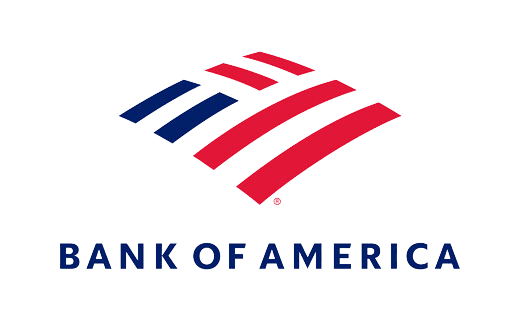Stock Market Game Terms You Need to Know
Available Equity: The amount of equity available for supporting additional buy and short sell transactions. This is the most the team can provide for their part of the 50% initial margin requirement. If this figure is negative, all buy and short sell transactions will be rejected.
Available Equity = Total Equity - [(Value of Longs + |Value of Shorts|) x 0.50]
Buying Power: The total amount of money available for stock purchases and short sales when fully extended on margin. Note that the payment of broker’s fees and interest charges not only reduces your balance, but also reduces your ability to borrow.
Buying Power = Available Equity x 2
Cash Balance: The amount of cash left from the initial $100,000. Once trading begins, the cost of all stock purchases is deducted along with any interest payments and realized losses. Any interest payments received, dividends, and realized gains are added back to the cash balance. If the cash balance is zero, any new buy or short sell transactions will be funded through borrowing on margin. If the cash balance is negative, this is the amount of money borrowed on margin.
Commission & Fees: A 2% fee is charged on all stock transactions. The total of all commission fees is listed in the Account Summary. Each individual commission fee is listed in the Transaction History.
Commission Fee = Value of Trade x 0.02
Cost Averaging: Averaging the cost of multiple trades (buys or short sells) of the same security. Like trades of the same security will be combined into one line in Account Holdings and Realized Gains/Losses. Cost averaging is done by dividing the total cost of all like trades in the same security by the total number of shares traded.
Delisted: A stock that has been delisted has been removed from an exchange and cannot be traded. A company’s stock may become delisted if it files for bankruptcy, merges with another company, moves from one exchange to another, or fails to meet exchange minimum standards. If you try to trade a stock that has been delisted, your order will be rejected. If a stock you own is delisted, it will be liquidated and any gain or loss will appear on the Gains & Losses page.
Initial Margin Requirement: The percent (50% in SMG) of collateral required to finance a purchase or short sell transaction. The concept of a margin requirement is aimed at: 1) limiting the amount of money that may be borrowed to finance trading in stocks (the Federal Reserve sets margin requirements); and 2) providing protection to the broker making the loan of money (for purchases) or stock (for short sales) against adverse changes in the market value of the collateral (long and short positions). See Maintenance Margin Requirement.
Initial Margin Requirement = (Value of Longs + |Value of Shorts|) x 0.50
IPO (Initial Public Offering): When a company switches from being privately owned to publicly owned (or “goes public”), the initial offering of stock for sale is called an IPO. IPOs will be available for trading after they have been added to the SMG system.
Interest on Cash: Money received for cash held in a bank account. In SMG, your average daily cash balance is calculated and you are paid interest weekly at an annual rate of 5%.
Interest on Cash = Cash Balance x (0.05/52)
Interest on Loans: Similar to the interest on cash balances, your average daily balance of money borrowed on margin is calculated and you are charged interest weekly at an annual rate of 7%.
Interest on Loans = Money Borrowed on Margin x (0.07/52)
Liquidate: To liquidate a stock holding, the stock must be either sold or short covered. To liquidate a portfolio, all open positions must be closed. Teams do not need to liquidate their portfolios at the end of the session.
Maintenance Margin Requirement: Also known as Minimum Maintenance, this is the minimum margin requirement (30% in SMG) that a team portfolio must maintain after borrowing on margin. If the total equity in your portfolio falls below 30% of the value of your long and short positions, your team will receive a margin call and you will have to sell or short cover some of your stocks. Note: For the following formula, use the absolute value (positive value) of the Value of Shorts.
Maintenance Margin Requirement = 0.30 x (Value of Longs + |Value of Shorts|)
Margin Call: A warning that the total equity in your portfolio has fallen below the 30% maintenance mar- gin requirement; a request for additional equity in to meet the maintenance margin requirement. If you receive a margin call, you will have three weeks to meet the 30% requirement. This can be accomplished if the value of your holdings increases or by selling or short covering a stock(s). The proceeds of any sale or short cover will be used to pay off some of the money you borrowed (i.e., reduce the amount on margin). If the requirement is not satisfied within seven days, SMG will sell or short cover long and short positions, beginning with the lowest priced stocks, until the minimum maintenance requirement is met.
Net Equity Gain: The amount of money your team has gained or lost since the beginning of SMG.
Net Equity Gain = Total Equity - $100,000
Net Cost/Share: For stocks in the long position, the amount of money spent on each share of stock, including the commission. If multiple trades of the same stock were made, the net cost per share will be an average of the net costs per share of each trade.
Net Cost/Share = price of each share of stock x 1.02
Percent Return: The percent gained or lost in the team’s portfolio since the beginning of the SMG session.
Percent Return: Net Equity Gain / $100,000
Price Limit: The maximum you are willing to pay per share when buying or short covering a stock or the minimum you are willing to sell each share for when selling or short selling a stock. You may enter a price limit when entering a transaction in the Enter a Trade section. The use of price limits is optional and serves to protect you against sharp market movements.
Realized Gains & Losses: The total amount of profit or loss realized from the sale or short cover of a stock. Interest received or paid and dividends received are also considered realized gains or losses. Any stock that is still held in your portfolio will not be listed in Realized Gains & Losses.
Realized Gains & Losses = Proceeds - Original Cost
Short Cover: Buying stock to replace the stock you originally borrowed from the broker for a short sell transaction. When you short cover, you are closing the short position.
Short Sell: Borrowing shares of a stock from your broker to sell on the open market. At some point, you must cover the short or buy enough shares to return those you borrowed. Short selling is a strategy used by those who think the price of a stock is going to decrease in the short term. The idea is to sell the borrowed stock now at a higher price, and once the value of the stock falls, to buy it to replace the borrowed stock. The profit is the difference between what is paid per share and what is received per share. Beware if the price of the stock begins to rise, because at some point the stock must be bought back (short covered) and returned to the broker. The value of a short position is the current price per share times the number of shares sold short.
Team Portfolio: A record of all transactions, activity, and stock positions of a team. It is typically updated daily.
Total Equity: The net value of a team portfolio.
Total Equity = Cash Balance + Value of Longs
Unrealized Gain & Loss: The difference in the initial purchase price of a stock and the current value of the stock. The gain or loss is unrealized, because the stock has not been sold or short covered (i.e., the position has not been closed).
To download a printable list of these terms, click here.












